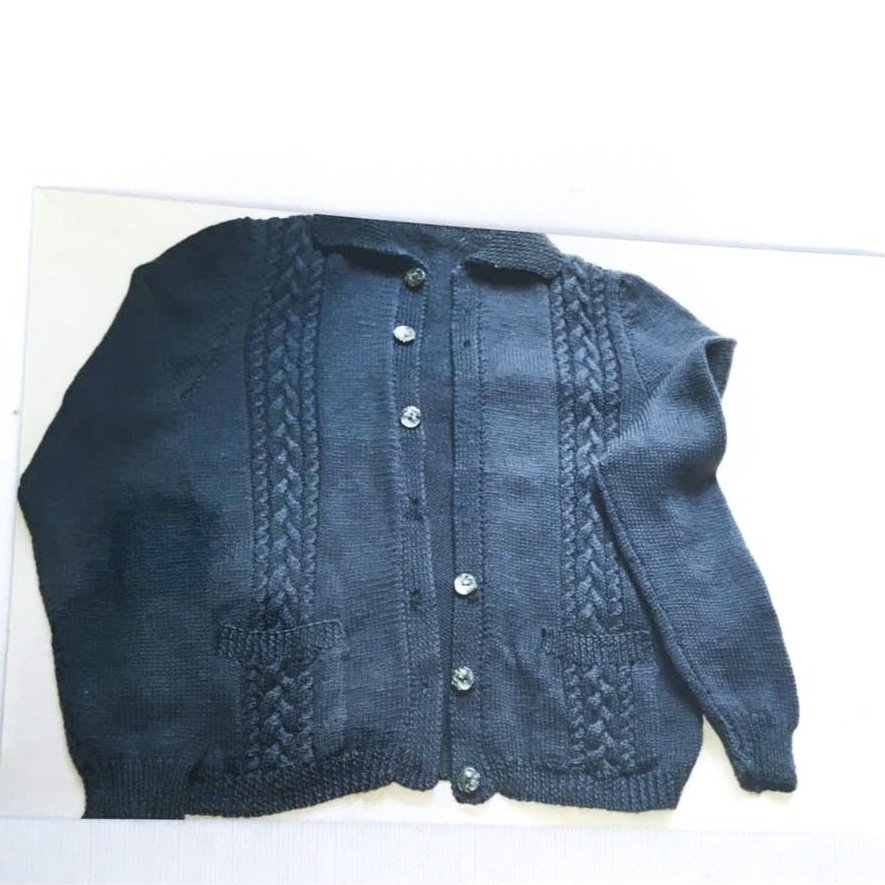An Aran cardign that my grandmother knitted during ealry on-set dementia
TOOL FOR EMPATHY
Last weekend I was so privileged to spend the weekend with the most inspiring group of artists and practitioners working with Norwegian wool, at the first Ulldaga in Selbu. We had so many wonderful conversations, and I am looking forward to many many more.
We were prompted to discuss what wool means to us and reflect on what it could mean in our future work. I presented some images of Aran sweaters that my grandmother knitted for me as a child. Growing up, wool handknits were always an expression of care. They nurtured a deep connection with the maker, even when she was no longer around. My grandmother developed Alzheimer’s in her 60s and knitting these sweaters became an important tool to keep her memory muscle active. The degeneration of her mind became embedded in her knitting. It started with cables twisted in one direction and then halfway through she would change direction. There was so much beauty to be found within the sadness.
In the picture above she started with buttonholes on one side, decided they should have been on the other side and closed them up, then changed her mind and unpicked them; leaving half on one side and half on the other. These garments were oddly mesmerising in their asymmetry. More beautiful because of their flaws. As a teenager I was struggling to understand her illness but these garments gave me great empathy for how the confusion inside her mind was unfolding.
Subconsciously this experience has shaped the way I work. My PhD research is about how the sensations in clothing affect our well-being both physically and emotionally. I am working specifically with people on the autism spectrum who can become overwhelmed by sensations. I don’t see their needs as a special. Everyone is enabled by sensory nourishment. Good sensations in clothing can offer physical care for the person who wears it, creating a deep emotional connection. The aim of my research is to cultivate a dialogue between the wearers and designers so they can learn from each other about how sensations are experienced and made.
Like my granny’s cardigans, I find that these dialogues often happen through the garments themselves; they become a tool for empathy.
